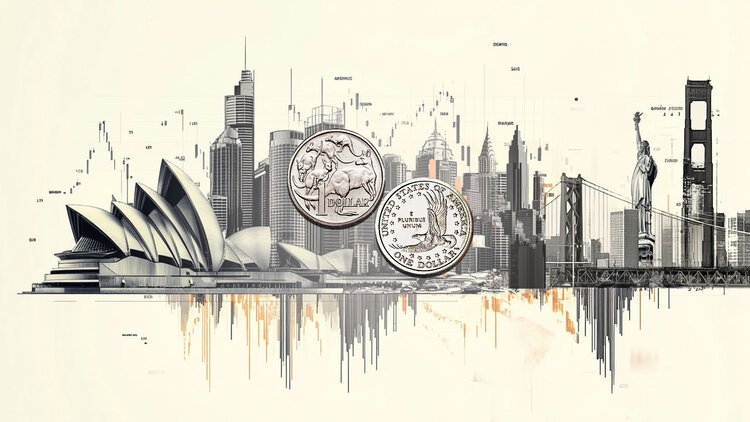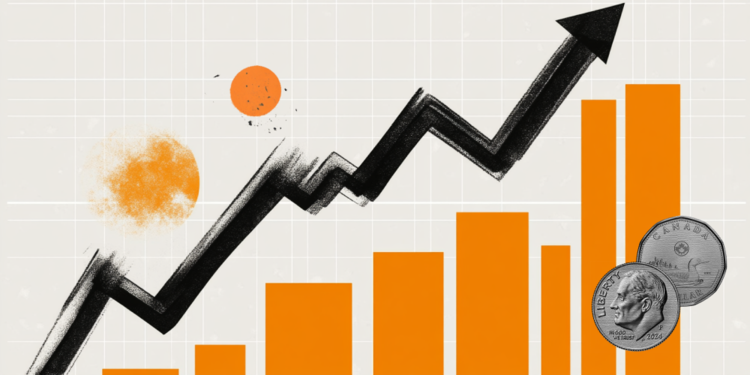The Australian Dollar (AUD) lost its footing on Tuesday, snapping a two-day winning streak as AUD/USD slipped back below the 0.6500 mark. Sellers stepped in as the US Dollar (USD) found fresh strength, supported by easing US–China trade worries despite growing speculation that the Federal Reserve (Fed) might lean more dovish in the months ahead, remaining well in place.
Local data still holding up
Australia’s latest data continue to paint a picture of resilience, even if the shine is fading a bit. September’s final manufacturing and services PMIs dipped slightly but stayed above 50, still signalling growth.
Retail Sales were up 1.2% in June, while the August trade surplus narrowed only modestly to A$1.825 billion. Business investment grew through Q2, and GDP expanded 0.6% on the quarter and 1.8% YoY: solid, if unspectacular, results.
The labour market, though, is showing a few cracks. The Unemployment Rate rose to 4.5% in September from 4.3%, and Employment Change disappointed at just +14.9K. It’s not an alarm bell yet, but it does hint that hiring momentum is cooling.
RBA staying cautious on inflation and jobs
The Reserve Bank of Australia (RBA) remains laser-focused on inflation and employment. The August Monthly CPI Indicator (Weighted Mean) edged up to 3.0% from 2.8%, while Q2 CPI climbed 0.7% inter-quarter and 2.1% from a year eaarlier. The Melbourne Institute’s Consumer Inflation Expectations also ticked higher, reaching 4.8% in October.
Additionally, the trimmed mean CPI is comfortably within the RBA’s 2–3% target range, sitting at an annualised 2.7% in Q2.
At its September 30 meeting, the RBA kept the Official Cash Rate (OCR) at 3.60%, as expected, but softened its earlier hints at possible easing. Policymakers noted that disinflation might be losing traction after the latest CPI surprise, suggesting Q3 inflation could print a little hotter than anticipated.
Governor Michele Bullock has stuck to a data-dependent approach, saying decisions will continue to be made “meeting by meeting.” While rate cuts aren’t off the table, she’s made it clear the RBA wants stronger evidence that inflation and demand pressures are easing.
Speaking again last week, Bullock signalled that firmer consumer spending and slightly stickier inflation have prompted the Bank to reassess the timing of any future cuts. With rates only mildly restrictive and financial conditions already easing, the RBA appears in no rush to move.
Markets are currently pricing in around 25 basis points of easing by year-end, with roughly 73% odds of a 25bp cut at the next meeting on November 4.
China still in the driver’s seat
Australia’s outlook remains closely tied to China’s patchy recovery. Chinese GDP expanded 4.8% YoY in Q3, stronger than expected, while Retail Sales surpassed forecasts at 3.0% in the year to September. However, PMIs painted a mixed picture in September, with manufacturing still contracting at 49.8 and services barely holding steady at 50.0.
Further data saw China’s trade surplus narrow to $90.45 billion in September from $103.33 billion, while consumer prices stayed in deflation, down 0.3% vs. September 2024.
Meanwhile, the People’s Bank of China (PBoC) left its Loan Prime Rates (LPR) unchanged on Monday, keeping the one-year rate at 3.00% and the five-year at 3.50%, as expected.
Technical picture
So far, extra gains in AUD/USD appear limited by the provisional 100-day and 55-day SMAs at 0.6533 and 0.6547, respectively.
Once this area of resistance is cleared, spot could attempt a move toward the October ceiling at 0.6629 (October 1), seconded by the 2025 peak at 0.6707 (September 17). Further up comes the 2024 high at 0.6942 (September 30), just ahead of the 0.7000 yardstick.
In case sellers regain the upper hand, the pair should meet initial support at the October base at 0.6440 (October 14), which appears propped up by the vicinity of the critical 200-day SMA at 0.6430, closely followed by the August trough at 0.6414 (August 21). Extra declines from here could pave the way for a test of the June low at 0.6372 (June 23), ahead of the key 0.6000 round level and the 2025 bottom at 0.5913 (April 9).
Momentum indicators now favour further weakness: the Relative Strength Index (RSI) navigates near the 42 level, suggesting that further losses could be waiting ahead. In addition, the Average Directional Index (ADX) past 20 suggests a trend that might be gaining strength.
AUD/USD daily chart
-1761062021346-1761062021346.png&w=1536&q=95)
Waiting for a catalyst
For now, AUD/USD remains trapped in a wide 0.6400–0.6700 range and needs a clear trigger to break out. A stronger run of Chinese data, a dovish surprise from the Fed, or a softer tone from the RBA could be the spark that finally gives the pair some fresh direction.
RBA FAQs
The Reserve Bank of Australia (RBA) sets interest rates and manages monetary policy for Australia. Decisions are made by a board of governors at 11 meetings a year and ad hoc emergency meetings as required. The RBA’s primary mandate is to maintain price stability, which means an inflation rate of 2-3%, but also “..to contribute to the stability of the currency, full employment, and the economic prosperity and welfare of the Australian people.” Its main tool for achieving this is by raising or lowering interest rates. Relatively high interest rates will strengthen the Australian Dollar (AUD) and vice versa. Other RBA tools include quantitative easing and tightening.
While inflation had always traditionally been thought of as a negative factor for currencies since it lowers the value of money in general, the opposite has actually been the case in modern times with the relaxation of cross-border capital controls. Moderately higher inflation now tends to lead central banks to put up their interest rates, which in turn has the effect of attracting more capital inflows from global investors seeking a lucrative place to keep their money. This increases demand for the local currency, which in the case of Australia is the Aussie Dollar.
Macroeconomic data gauges the health of an economy and can have an impact on the value of its currency. Investors prefer to invest their capital in economies that are safe and growing rather than precarious and shrinking. Greater capital inflows increase the aggregate demand and value of the domestic currency. Classic indicators, such as GDP, Manufacturing and Services PMIs, employment, and consumer sentiment surveys can influence AUD. A strong economy may encourage the Reserve Bank of Australia to put up interest rates, also supporting AUD.
Quantitative Easing (QE) is a tool used in extreme situations when lowering interest rates is not enough to restore the flow of credit in the economy. QE is the process by which the Reserve Bank of Australia (RBA) prints Australian Dollars (AUD) for the purpose of buying assets – usually government or corporate bonds – from financial institutions, thereby providing them with much-needed liquidity. QE usually results in a weaker AUD.
Quantitative tightening (QT) is the reverse of QE. It is undertaken after QE when an economic recovery is underway and inflation starts rising. Whilst in QE the Reserve Bank of Australia (RBA) purchases government and corporate bonds from financial institutions to provide them with liquidity, in QT the RBA stops buying more assets, and stops reinvesting the principal maturing on the bonds it already holds. It would be positive (or bullish) for the Australian Dollar.






